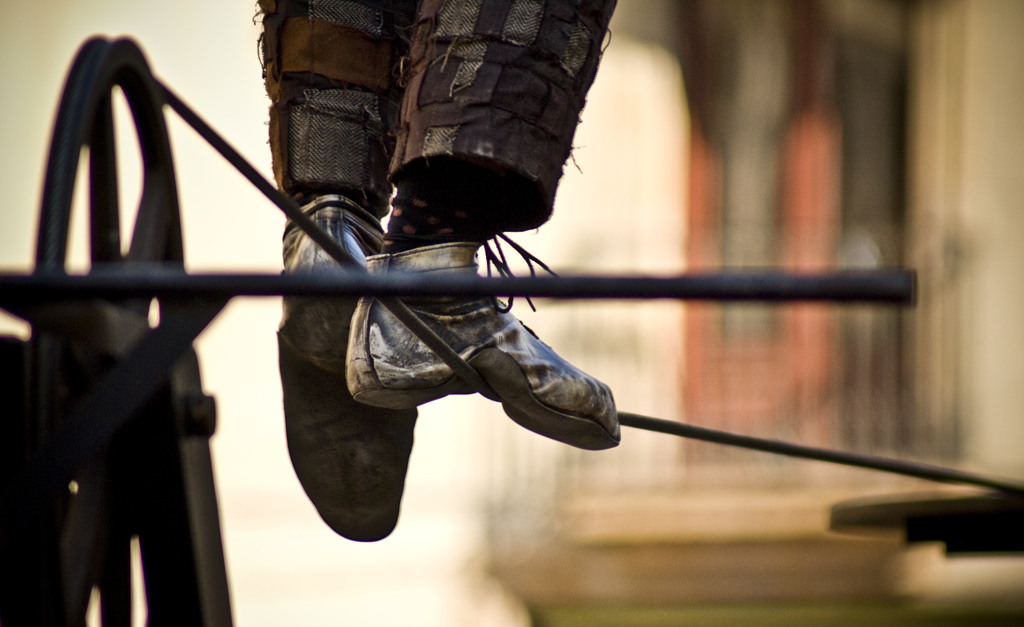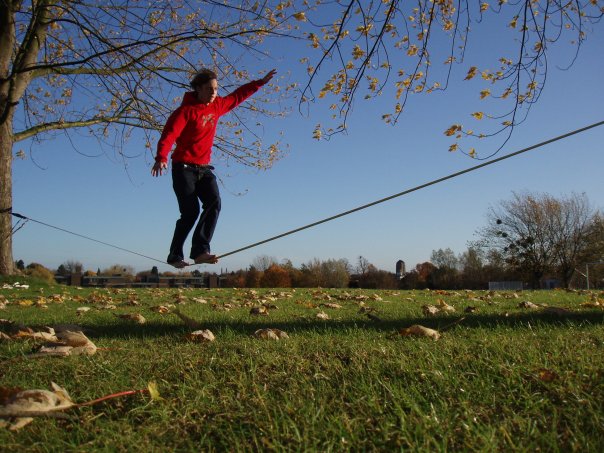|
Jultagi
''Jultagi'' or ''eoreum'' is traditional Korean performance of tightrope-walking. It is included into South Korea's Important Intangible Cultural Properties number 58. Origin There is no evidence when this acrobatic performance originated. Some scholars presumed it appeared during Silla and Goryeo era. It became more famous in Joseon dynasty era and still exists to this day. It is different from the tightrope-walking styles of other countries, because it is usually accompanied by music plays by telling a story to entertain viewers. Jultagi is held on Public holidays in South Korea like Daeboreum, Dano and Chuseok holidays. The Korean folk village in Seoul also presents this play to entertain tourists. It was also performed in events held in the royal palace, banquets of high-ranking government officers or village festivals. The tightrope walking performance is composed of a rope player, a clown and musical instrument players. An example of these plays can be seen in the ... [...More Info...] [...Related Items...] OR: [Wikipedia] [Google] [Baidu] |
Important Intangible Cultural Properties Of South Korea
The Intangible Cultural Heritage (, ''Muhyeong Munhwajae'') are aspects of intangible culture that the government of South Korea has officially designated for preservation in accordance with the 1962 Cultural Property Protection Law. They are proclaimed and maintained by South Korea's Cultural Heritage Administration. Practices of particular importance can be designated as Important Intangible Cultural Properties (, ''Jungyo Muhyeong Munhwajae''). The first practice so designated was '' Jongmyo jeryeak'', the ancient music and dance performed at the Jongmyo Royal Ancestral Shrine in Seoul; it was proclaimed on December 7, 1964. The most recent, announced on November 16, 2006, was Important Intangible Cultural Property 119, '' geumbakjang'' ( gold leaf decoration), practiced in Seongnam, Gyeonggi-do. A similarly named yet distinct designation, "Intangible Cultural Properties," also exists, with 33 items having been proclaimed. These are proclaimed by provinces or cities rathe ... [...More Info...] [...Related Items...] OR: [Wikipedia] [Google] [Baidu] |
Important Intangible Cultural Properties Of Korea
The Intangible Cultural Heritage (, ''Muhyeong Munhwajae'') are aspects of intangible culture that the government of South Korea has officially designated for preservation in accordance with the 1962 Cultural Property Protection Law. They are proclaimed and maintained by South Korea's Cultural Heritage Administration. Practices of particular importance can be designated as Important Intangible Cultural Properties (, ''Jungyo Muhyeong Munhwajae''). The first practice so designated was '' Jongmyo jeryeak'', the ancient music and dance performed at the Jongmyo Royal Ancestral Shrine in Seoul; it was proclaimed on December 7, 1964. The most recent, announced on November 16, 2006, was Important Intangible Cultural Property 119, ''geumbakjang'' (gold leaf decoration), practiced in Seongnam, Gyeonggi-do. A similarly named yet distinct designation, "Intangible Cultural Properties," also exists, with 33 items having been proclaimed. These are proclaimed by provinces or cities rather t ... [...More Info...] [...Related Items...] OR: [Wikipedia] [Google] [Baidu] |
Tightrope Walking
Tightrope walking, also called funambulism, is the skill of walking along a thin wire or rope. It has a long tradition in various countries and is commonly associated with the circus. Other skills similar to tightrope walking include slack rope walking and slacklining. Types Tightwire is the skill of maintaining balance while walking along a tensioned wire between two points. It can be done either using a balancing tool (umbrella, fan, balance pole, etc.) or "freehand", using only one's body to maintain balance. Typically, tightwire performances either include dance or object manipulation. Object manipulation acts include a variety of props in their acts, such as clubs, rings, hats, or canes. Tightwire performers have even used wheelbarrows with passengers, ladders, and animals in their act. The technique to maintain balance is to keep the performer's centre of mass above their support point—usually their feet. Highwire is a form of tightwire walking but performed at much gr ... [...More Info...] [...Related Items...] OR: [Wikipedia] [Google] [Baidu] |
Tightrope-walking
Tightrope walking, also called funambulism, is the skill of walking along a thin wire or rope. It has a long tradition in various countries and is commonly associated with the circus. Other skills similar to tightrope walking include slack rope walking and slacklining. Types Tightwire is the skill of maintaining balance while walking along a tensioned wire between two points. It can be done either using a balancing tool (umbrella, fan, balance pole, etc.) or "freehand", using only one's body to maintain balance. Typically, tightwire performances either include dance or object manipulation. Object manipulation acts include a variety of props in their acts, such as clubs, rings, hats, or canes. Tightwire performers have even used wheelbarrows with passengers, ladders, and animals in their act. The technique to maintain balance is to keep the performer's centre of mass above their support point—usually their feet. Highwire is a form of tightwire walking but performed at much gr ... [...More Info...] [...Related Items...] OR: [Wikipedia] [Google] [Baidu] |
Acrobatic Performance
Acrobatics () is the performance of human feats of balance, agility, and motor coordination. Acrobatic skills are used in performing arts, sporting events, and martial arts. Extensive use of acrobatic skills are most often performed in acro dance, circus, and gymnastics, and to a lesser extent in other athletic activities including ballet, slacklining and diving. Although acrobatics is most commonly associated with human body performance, the term is used to describe other types of performance, such as aerobatics. History Acrobatic traditions are found in many cultures, and there is evidence that the earliest such traditions occurred thousands of years ago. For example, Minoan art from c. 2000 BC contains depictions of acrobatic feats on the backs of bulls. Ancient Greeks practiced acrobatics, and the noble court displays of the European Middle Ages would often include acrobatic performances that included juggling. In China, acrobatics have been a part of the cultu ... [...More Info...] [...Related Items...] OR: [Wikipedia] [Google] [Baidu] |
Slacklining
Slacklining refers to the act of walking, running or balancing along a suspended length of flat webbing that is tensioned between two anchors. Slacklining is similar to slack rope walking and tightrope walking. Slacklines differ from tightwires and tightropes in the type of material used and the amount of tension applied during use. Slacklines are tensioned significantly less than tightropes or tightwires in order to create a dynamic line which will stretch and bounce like a long and narrow trampoline. Tension can be adjusted to suit the user, and different webbing may be used in various circumstances. Styles of slacklining Urbanlining Urbanlining or urban slacklining combines all the different styles of slacklining. It is practiced in urban areas, for example in city parks and on the streets. Most urban slackliners prefer wide lines for tricklining on the streets, but some may use narrow () lines for longline purposes or for waterlining. Also see the other sections of sla ... [...More Info...] [...Related Items...] OR: [Wikipedia] [Google] [Baidu] |
Korean Folk Village
Minsok village (Korean Folk Village) is a living museum type of tourist attraction in the city of Yongin, a satellite city in the Seoul Metropolitan Area in the province of Gyeonggi in South Korea. It was first opened on October 3, 1974 (ground breaking in 1973 and completion in 1974). Korean Folk Village is a popular tourist destination for both Koreans and foreigners, located near South Korea's largest amusement park, Everland. Real houses from across the country were relocated and restored to create a replica of a village from the late Joseon period. Events such as celebrating seasonal changes and traditional performances are held in KFV. The village is set up in a natural environment occupying approximately 245 acres. Over 260 traditional houses reminiscent of the late Joseon Dynasty can be found there. The purpose of the Korean Folk Village is to display elements of traditional Korean life and culture. There are multiple sections to the park, including numerous replicas of ... [...More Info...] [...Related Items...] OR: [Wikipedia] [Google] [Baidu] |
Pungmul
''Pungmul'' (; ) is a Korean folk music tradition that includes drumming, dancing, and singing. Most performances are outside, with dozens of players all in constant motion. ''Pungmul'' is rooted in the ''dure'' (collective labor) farming culture. It was originally played as part of farm work, on rural holidays, at other village community-building events, and to accompany shamanistic rituals, mask dance dramas, and other types of performance. During the late 1960s and 1970s it expanded in meaning and was actively used in political protest during the pro-democracy movement, although today it is most often seen as a performing art. Older scholars often describe this tradition as ''nongak'' (), a term meaning "farmers' music" whose usage arose during the colonial era (1910–1945). The Cultural Heritage Administration of South Korea uses this term in designating the folk tradition as an Important Intangible Cultural Property. Opposition from performers and scholars toward its u ... [...More Info...] [...Related Items...] OR: [Wikipedia] [Google] [Baidu] |
Korean Culture
The traditional culture of Korea is the shared cultural and historical heritage of Korea and southern Manchuria before the division of Korea in 1945. Manchuria refers to the ancient geographical and historical region in Northeast Asia, including countries like China and Russia. Since the mid-20th century, Korea has been split between the North Korean and South Korean states, resulting in a number of cultural differences that can be observed even today. the practice of Confucianism and Korean shamanism is deeply rooted in Korean culture. Clothing The traditional dress known as ''hanbok'' (한복, 韓服) (known as ''joseonot'' ��선옷in the DPRK). The ''hanbok'' consists of a shirt (''jeogori'') and a skirt (''chima''). According to social status, Koreans used to dress differently, making clothing an important mark of social rank. Costumes were worn by the ruling class and the royal family. These upper classes also used jewelry to distance themselves from the ordinar ... [...More Info...] [...Related Items...] OR: [Wikipedia] [Google] [Baidu] |
Korean Dance
Dance in Korea began with shamanistic early rituals five thousand years ago and now ranges from folk dance to newly created and adopted contemporary dance. Overview Korean traditional dance originated in ancient shamanistic rituals thousands of years ago. By the time of the later Korean kingdoms, Goryeo and Joseon, in the 2nd millennium AD, Korean traditional dance benefited from regular support of the royal court, numerous academies, and even an official ministry of the government. A number of different dances gained permanent high status, including the Hermit dance, the Ghost dance, Buchae Chum (the fan dance), Seung Mu (the Monk dance), the Oudong (Entertainer) dance and others, despite the fact that many had humble origins. For example, the Fan dance is believed to have originated with shamans performing nature rites with leaves but evolved into one of the most highly refined Korean dances. Other Korean dances remained and remain to this day under the ambit of farme ... [...More Info...] [...Related Items...] OR: [Wikipedia] [Google] [Baidu] |
Yi Chong-jun
Yi Cheong-jun (, 9 August 1939 - 31 July 2008) was a prominent South Korean novelist. Throughout his four decade-long career, Yi wrote more than 100 short stories and 13 novels. Life Yi Cheong-jun was born in 1939. He graduated with a degree in German literature from Seoul National University. In 1965, he debuted with a short story titled ''Toewon'' (퇴원, lit. "Leaving the Hospital"). Two years later, he won a Dongin Literature Award for ''The Wounded'' (''Byeongsingwa Meojeori'', 병신과 머저리). He died from lung cancer at the age of 68 on July 31, 2008. Work Yi Cheong-jun is considered one of the foremost writers of the 4.19 Generation and his literary output since has been both steady in pace and considerable in volume, and his subject matter has been varied. ''The Wounded'' (Byeongsin gwa mejeori, 1966) probes the spiritual malaise of the post-war Korean youth; ''This Paradise of Yours'' (Dangsindeurui cheonguk, 1976) explores the dialectics of charity and will ... [...More Info...] [...Related Items...] OR: [Wikipedia] [Google] [Baidu] |









